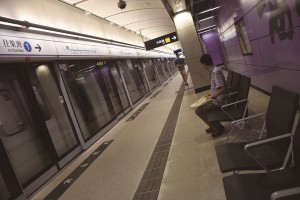A survey of 1,439 people by the Kowloon Federation of Associations last year found nearly half of the respondents thought the MTR was “doing so-so” when handling train operational incidents while more than 22 per cent of respondents were dissatisfied with MTR services as a whole. Nearly 60 per cent of the respondents thought MTR incidents happened frequently.
However, according to MTR’s Annual Report, the number of “reportable events” has dropped from 1,769 in 2011 to 1,327 in 2014. Yuuji explains these include events unrelated to the operation of the railway system such as injured passengers and malfunctioning escalators.

He says the MTR also has ways of dealing with incidents to prevent them from becoming “reportable”. “If a train is delayed for over eight minutes it becomes a reportable event…so repairs are usually carried out while other trains are still run on the same track to ‘make the numbers look better’.” This has the effect of keeping the problem train out of commission for a shorter period of time but adding a slight delay to every train on the track and affecting more passengers.
Sometimes MTR journeys may take longer because of overcrowding rather than breakdowns and signal failures.
Tunisian-born Leila Karchoud has been in Hong Kong for nearly 25 years, working as a freelance language teacher and court interpreter. Karchoud used to teach 7 p.m. classes at a language centre in Causeway Bay and would take the MTR there from her home in Tsim Sha Tsui.
One evening, she started the journey 45 minutes before class only to find a huge crowd at the interchange station, Admiralty. “I was shocked…the queue was so long I have never seen a queue like that…It was half the distance [between one platform and the other].”
Karchoud thought the crowd would clear as trains arrived every two minutes, but when the trains came they were full and only a few people could get on. She was stuck in Admiralty for half an hour and was late for work. Since then, Karchoud avoids the MTR, especially during peak hours.
Yuuji from MTR Service Update says the frequent breakdowns and deterioration of the railway system may be inevitable due to the increased demand for MTR services over the past decade.
Transport Department statistics from March this year show the MTR carries about 4.62 million passengers per day, accounting for 41 per cent of public transport usage. This is a 30.5 per cent increase from the 3.54 million passengers per day recorded in December 2007, a month after the MTR merged with the Kowloon–Canton Railway.
A single journey along the East Rail line took 35 minutes in 2009 but takes 41 minutes now, due to longer waiting times to pick up passengers at stations. The higher number of mainland visitors has also led the MTR to increase train frequencies to meet demand.
The MTR currently runs nine lines with a total route length of 177.4 kilometres and 85 stations. By 2031, at least nine new lines are expected to be operating and the government expects the MTR to account for half of a public transport usage. It also says most lines will be below saturation point for some time to come. Yuuji is sceptical. “Can a railway system that is already a few decades old handle the number of passengers that reaches its record high every year?” he questions.






































